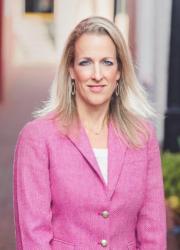Free Market: The History of an Idea by Jacob Soll, a professor of history, philosophy, and accounting, attempts to trace the philosophical and theoretical evolution of the free market over 2,000 years. But a century-by-century account would prove tedious if for no other reason that Soll begins his history lesson by discounting free market thinkers and free markets altogether. It becomes clear at the outset that his ideological precommitments make him suspicious of free markets, especially their ability to generate good outcomes. He views free market thinkers as nothing more than overzealous missionaries unwilling to admit that markets are imperfect. For example, Milton Friedman is criticized consistently throughout the book for his so-called free market evangelism. Soll then goes on to suggest that China’s paramount leader, Xi Jinping, may be the only voice left worldwide defending free trade now that even the Republican Party supports trade tariffs. This is confusing and dangerous: Xi Jinping likes power, not free markets. Moreover, Soll claims that the U.S. Chamber of Commerce today embodies Freidman’s “free-market orthodoxy.” Soll never considers that local chambers of commerce are bastions of rent-seeking and privilege for corporate interests that are deviations from, not embodiments of, how free markets function.
Soll is correct that many Republicans have abandoned free markets, but that doesn’t make it economically sound. The question of whether markets work is an empirical one. First, we need to define the term free market, which Soll never really does. We must also understand economics. Economic theories must be grounded in, among other things, metaphysical truths. As such they allow us, amid much noise and many unknowns, to explain human behavior. Economists should always be confined to the study of comparative institutional analysis, in light of our metaphysical reality. Soll should be asking this question: Relative to alternative institutional arrangements, which truly foster freedom, virtue, wealth creation, and facilitate human flourishing? This is how we evaluate the efficacy of the free market.
As one would expect, Adam Smith, known today as the father of modern economics, is given a great deal of attention throughout the book. This is a good thing. The insights of Adam Smith and his lasting legacy are paramount for the questions Soll is attempting to address: Do free markets work, and are they worth saving?
The problem is that he misunderstands Smith, in the same way that he misrepresents Friedman and several others he labels “free market economists,” and this is because Soll himself is not an economist. Here is the central problem with his investigation. We understand early in his writing that he is suspicious of markets, which is his prerogative. But remember, whether free markets work relative to constrained markets is an empirical question, not one of personal preference. It’s a question that many have addressed and one that deserves continued consideration. But he almost dismisses such inquiries out of hand and goes on to interpret Smith through the lens of his prejudices against markets. For example, Adam Smith did not hate merchants as Soll claims. After all, he thinks the work of the butcher, the baker, and the brewer are essential for growing prosperity, which he wants everyone (not just the rich) to experience. Smith understands human nature well, which makes him an effective economic thinker. Smith saw human nature for what it is: “sometimes good and sometimes bad, sometimes smart and more often stupid.” Thus, there is nothing in free market theory that suggests markets are, or can be, perfect—it’s all about the alternatives. As opposed to what?
Smith worried about power and privilege and understood the perniciousness of greed. Soll rightly shares those concerns. But Smith goes further and distinguishes between self-interest, which is how we make choices and often involves sacrifice, and greed, which he insists is never good. Soll never understands the distinction and rails against markets and libertarians, casting them as blinded ideologues and corporate social Darwinists. Markets are about cooperation because their functioning requires well-defined and well-defended private property rights, prices, and profit-loss signals. Soll never addresses the technical aspects of how markets work as a metric for evaluating them against less-free markets, likely because he isn’t an economist but a polemicist.
While Soll never suggests that we can achieve some kind of utopia with the right mix of government intervention in the operation of markets, nevertheless he should have considered the significant, deleterious, and unintended consequences that inevitably come in the wake of a large administrative state. At one point Soll calls free market policies “self-canceling” but never recognizes that government efforts to tame markets are also self-canceling. He never addresses the rich literature on government failure, and there is no mention of Nobel laureate James Buchanan and his work on the incentive and output problems within political markets.
Thinkers such as Smith and Locke argued that private property rights are absolutely necessary for free markets to yield economic growth. Soll recognizes this truth yet seems to side with government corrections without acknowledging how those very interventions impinge on private property rights. For Locke and Smith, it was a new intellectual discovery that private property rights were moral and economic requirements for the free market to work. In fact, the free market economy, in the long history of the world, is a relatively new idea, and Locke was initiating a conversation about what it meant for people to hold property. Prior to this most people lived in immiserating poverty and experienced early death because they lacked access to scalable market exchange and commerce; history was a series of zero-sum games. But fresh thinking on the meaning of human dignity and private property changed everything. These ideas were slowly teased out and developed over millennia. Soll takes us through the long historical teasing-out process, but his economic blinders limit his understanding.
For example, mercantilism, which is economic nationalism, was the dominating economic system in Europe from the 16th through the 18th centuries, leading up to the first Industrial Revolution, which freed ordinary people from permanent social and economic hierarchies. Adam Smith rejected mercantilism, and the economic history that unfolded was a living experiment in scalable free-er markets—for the first time in human history. Jean-Baptist Colbert, Louis XIV’s comptroller general of finance, wanted to use mercantilism to provide guardrails for the free market, even suggesting the establishment of monopolies. Alexander Hamilton agreed, as do today’s national conservatives. Soll never asks the counterfactuals: Would England have been richer had it not pursued mercantilism? And would the U.S. be better off today if we dropped protectionist policies?
Moreover, Soll suggests that the 18th-century British strategy of giving companies monopolies in return for financing the public debt is a free market solution! Monopolies are cited as evidence of a market failure, so how is using the state to create what we call a market failure an example of a “free market solution”? This disregards the power vacuum that these types of public-private “partnerships” bring about. Soll goes on to credit the success of Colbert’s policies to “out-exporting” Britain. This is a persistent but incorrect view of trade; out-exporting doesn’t necessarily imply wealth creation or economic growth. Free trade is mutually beneficial exchange, by definition.
The last chapter of the book, which intensifies Soll’s indictments of unconstrained markets, is titled “The End of Virtue: Liberalism and Libertarianism,” in which he blames Herbert Hoover for the Great Depression, praises Keynes for his theories of aggregate demand stimulus, and suggests that radical free market contingents in the 1980s were composed of evangelical leaders like Pat Robertson and southern racists. He never questions the Keynesian solution and whether government can effectively stimulate demand and what the potential unintended consequences might be. He conflates the failure of state interventions and regulated markets as a failure of free markets themselves. He further loses credibility when he asserts that the “orthodox libertarian free market model does not exist and has never existed outside of places with no government, such as the ultra-violent ‘frontier economies’ like South Sudan.” He truly jumps the shark here. Sudan’s problems are precisely because it has no economic freedom and lacks free markets and political liberalism. In fact, it ranks second to last in the most recent Economic Freedom of the World Index.
Soll ends the book decrying free market evangelism without ever interrogating the evangelists of big government. He even claims Ludwig von Mises converted from Judaism to Christianity “in accordance with his economic ideology.” And while noting that Mises and Hayek were successful in challenging the socialists, he refuses to acknowledge Hayek’s and Friedman’s understanding of the complex relationship between economic freedom and political liberalism. None of these free market advocates suggest we can get utopia or that free markets alone are enough: They must be supported by sound institutions.
In summation, Soll suggests that if we are going to reclaim markets, we must redesign them such that the state is embedded in them. Yet he does not seem to grasp that “the market” is not the product of someone’s imagination. The ratio of government involvement to negative economic outcomes is to be resolved through empirical investigation. Soll consistently mistakes economic problems for engineering problems and never once asks: If the government should tame markets, who should tame the government?

